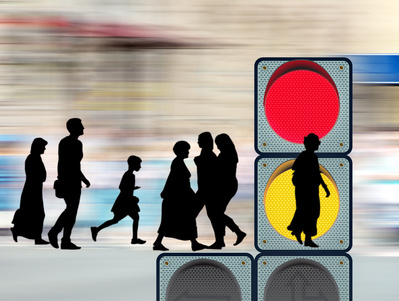Source Documents for Pedestrian-Safe Road Planning in Australia
All major Australian cities, such as Sydney and Melbourne, are witnessing a sharp increase in traffic, calling for the implementation of deliberate measures by traffic engineers to counter road accidents, congestion, and ensure people’s safety. Ensuring pedestrian-safety, however, is not limited to traffic engineering, as education has an equally critical role to play. There are three major source documents that list provisions and designs of pedestrian facilities, which allow government bodies, developers, and traffic engineers in Sydney and other parts of Australia, to develop pedestrian-safe roads.
Let’s take a look at the three source documents.
1. Australian Standard (AS) 1742.10 – 1990 Manual of Uniform Traffic Control Devices, Part 10: Pedestrian Control and Protection
The document discusses requirements for traffic control devices that assist in controlling and protecting pedestrian traffic on the roads. It covers the definition of these devices, installation guide, clauses and other references. Requirements for children, the elderly, and people with disabilities at traffic signals and railway level crossings are highlighted prominently in the document. The document also classifies pedestrian facilities according to the following types:
Time Separation
Their installation controls the movement of vehicles and pedestrians on the road. Pedestrians are allowed to use a specific section of the road for short-period periods. For instance, zebra crossings with pedestrian actuated traffic signals are planned at some locations to provide sufficient time for pedestrians to cross the road whilst minimising the delay to motorists travelling along the road.
Physical (or spatial) Separation/ Physical Pedestrian Aids
Installation of physical or spatial separation is essential for roads that experience low pedestrian traffic, such as heavily trafficked roads and locations where it is difficult to justify time separated devices. Therefore, physically separated facilities, including bridges, subways, and pedestrian malls are constructed to ensure greater pedestrian protection and minimize disruption to road traffic. Additionally, there are provisions for erecting pedestrian fencing and creating traffic islands and medians to minimize interactions between pedestrians and vehicles.
Integrated Facilities
Integrated facilities are required in locations where pedestrians, such as school children or patients from a hospital, share road spaces. Pedestrian warning signs, school zones, shared zones, speed limits, and other essential warning signs are erected by the roadside to indicate the movement of such pedestrians and to warn drivers that this is an environment where there is likely to be the particular pedestrian types.
2. Austroads Guide to Traffic Engineering Practice, Part 13: Pedestrians
The publication gives a design overview of pedestrian facilities in conformance with the requirements of Australian standards, road design rules, and pedestrians with special needs. Road designs have become significantly important for the safety of pedestrians, as they are the most vulnerable road users and account for a significant number of serious road injuries and fatalities. The document, covers traffic control and safety schemes introduced for all potential users, including their interpretation and application for specific situations. The document also highlights the fact that pedestrians have a different set of attitude, behavior, and capabilities when compared to drivers. Traffic engineers in Sydney and Melbourne, therefore, need to consider the flow and depth of pedestrians, peak times, journey origins and destinations, and purposes of the trips as part of their traffic engineering assessment.
3. Empirical Studies of Safety of Pedestrian Facilities
In 1995, Moore and McLean prepared a review of pedestrian facilities for the South Australian Department of Transport. The review included issues around the provision and operation of pedestrian facilities, together with specific types of facilities. Apart from the review, another study undertaken in 1994 by Geoplan, considered the relative safety of different types of devices through different routes, along with traffic flow and accident data for places where traffic facilities were installed in the last decade. The data assisted Geoplan to compare crash rates before and after the construction of pedestrian safety measures. Geoplan concluded that there are changes between treated and untreated sites which impact driver behavior at different times of the day.
Final Words
In Australia, operational traffic safety issue are divided into eight geographically distant jurisdictions that make it challenging for traffic engineers to prepare pedestrian safety programs. All three information sources are essential references for traffic engineers in Sydney and Melbourne, as they provide a set of guidelines to ensure the protection of pedestrians. The traffic engineers at EB Traffic – a trusted traffic engineering solutions provider in Australia – abide by these and other documents whenever we have to design or redesign roads, to ensure pedestrian-safety. For a no-obligation consultation with our team of traffic engineers in Sydney and Melbourne, simply call 0408 395 729 or fill out our contact form.








